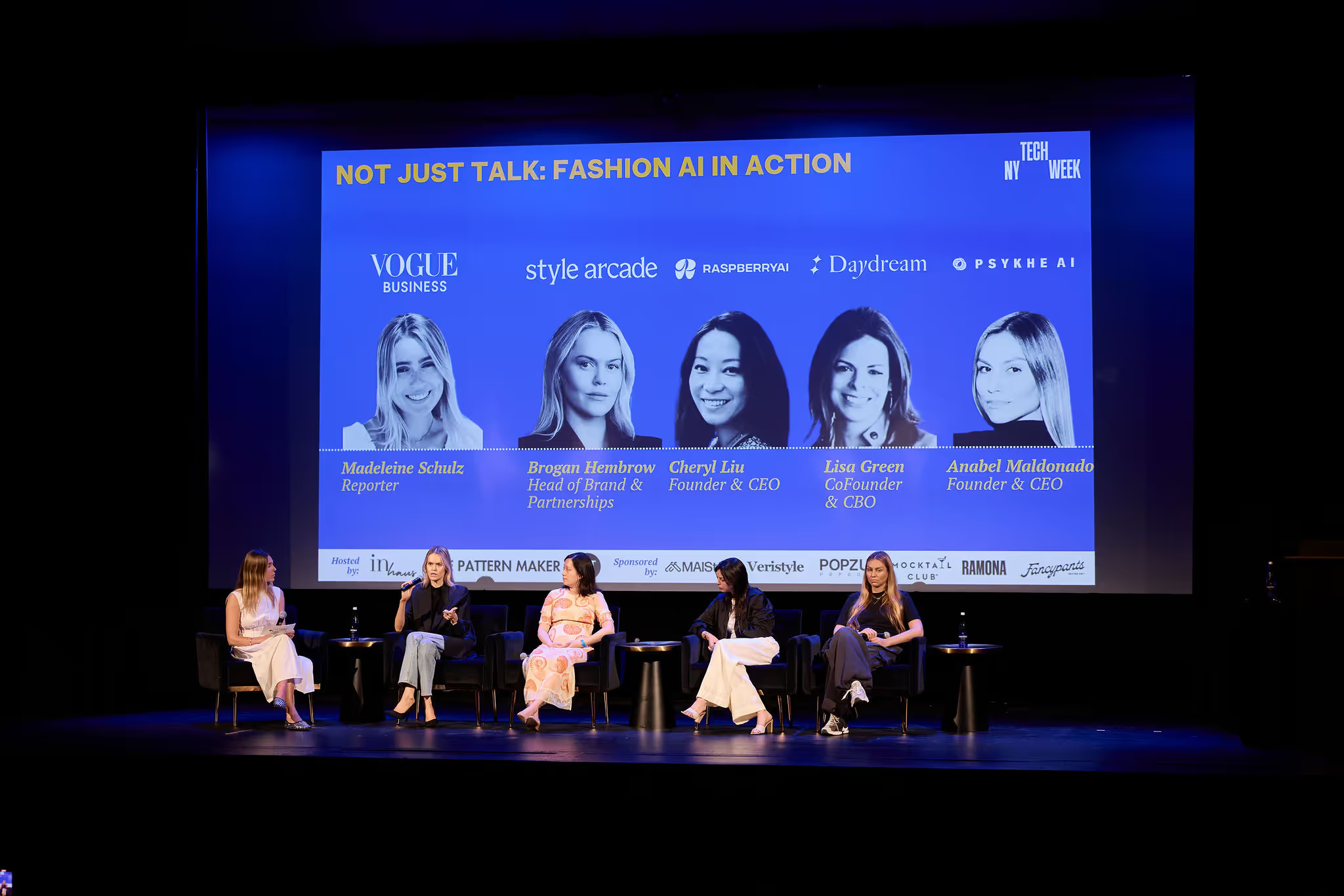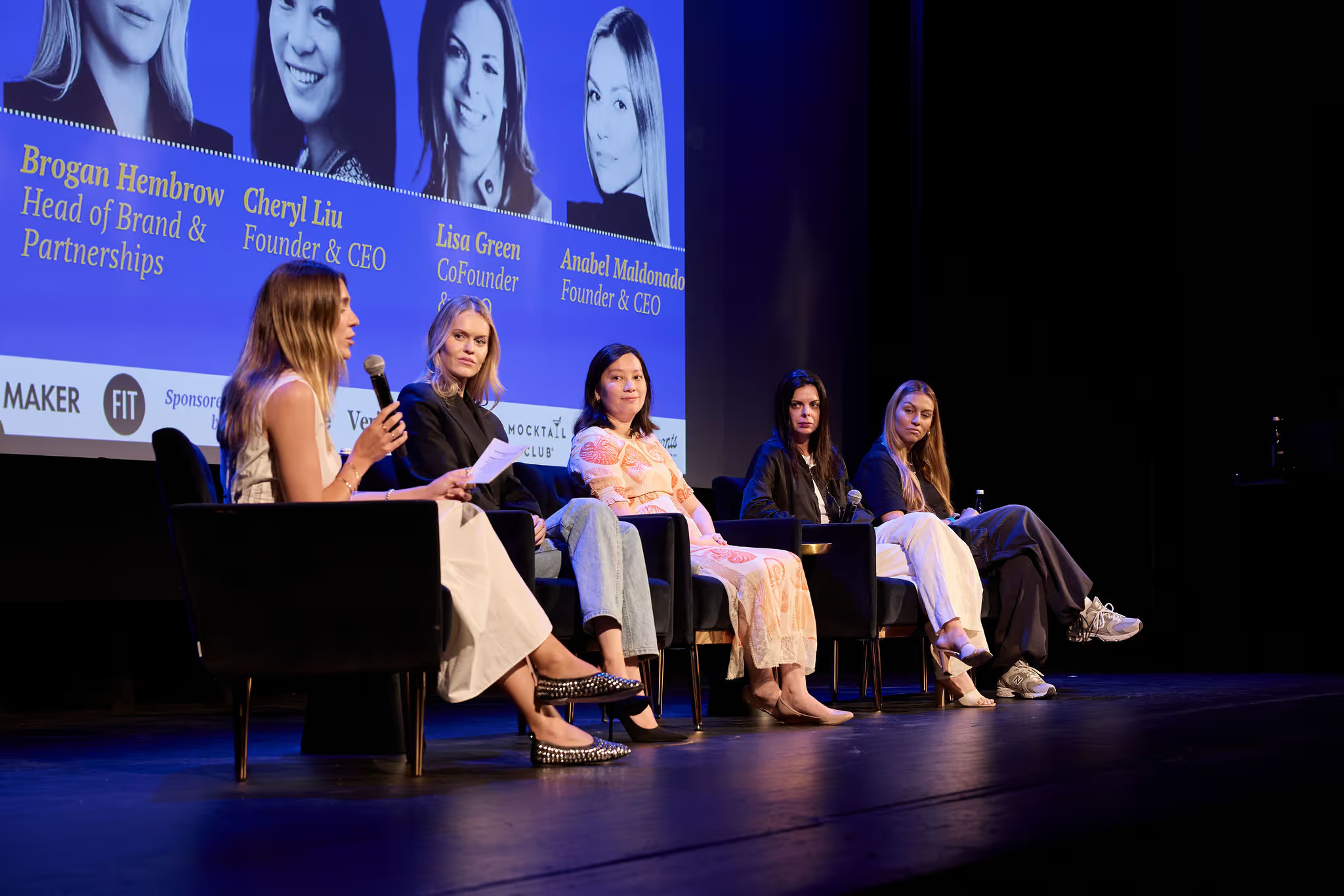
Fashion has been slow on the uptake for advanced artificial intelligence, but the wheels are turning. AI is now shifting from theoretical promise to strategic and business-critical deployment in fashion retail, especially where inventory is concerned.
During New York Tech Week, Style Arcade’s Head of Brand and Partnerships, Brogan Hembrow joined the Not Just Talk: Fashion AI In Action panel, among panellists from leading fashion technology firms and Vogue Business, to discuss why the industry can no longer ignore AI as the future-focused answer to fashion retail’s biggest problems.
“This industry has long resisted one-size-fits-all tech, and for good reason. Fashion requires tools that move at pace, support creative instinct, and can handle operational complexity with precision,” said Brogan. “That shift is now underway, and what we’re seeing is the emergence of AI purpose-built for fashion, not just applied to it.”
The challenges shaping strategic planning and merchandising:
Strategic planning in fashion today is incredibly high pressure and is only getting more difficult with accelerated consumer expectations. Brands are navigating shorter trend cycles, rising costs, tariffs, slimming margins, all while still expected to forecast product performance with lead times of up to 45 weeks. Fashion brands and retailers have become accustomed to predicting how many products and sizes to order to match customer demand up to 10 months in advance.
“When brands can't do this accurately, it leads to a retail inventory distortion, which is a big problem in our industry, from both missed opportunity and also wastage,” says Brogan.
“Fashion teams are still making buying decisions in spreadsheets. And, when you’re a fast-scaling brand acquiring thousands of new customers a month, and buyer preferences are shifting overnight, it becomes almost impossible to accurately and strategically forecast without the right technology in place,” Brogan said.
Style Arcade works by matching supply with demand and recommending order quantity, by size, for specific items. For example, if a buyer is placing an order for a white, short-sleeved mini-dress, delivered on January 26 to a brand’s top five stores and priced at $199, Style Arcade can accurately determine the requirements based on all facets of demand.
The issue isn’t a lack of data; it's the lack of technology that matches the complexity and pace of critical buying and planning tasks, with the required level of granularity. Without this kind of technology, these tasks remain error-prone and time-consuming for the buyer.

Why AI needs to be purpose-built for fashion:
Fashion retailers have largely been hesitant to undertake advanced technologies in their day-to-day workflows, with the industry fearing that AI will override creative instinct.
“The fear is valid,” said Brogan. “Fashion is emotional. It’s not just about patterns—it’s about taste, timing, and brand.”
The problem is that standardized AI demand forecasting was designed for the fast-moving consumer goods (FMCG) industry, which does not consider the complexities of the fashion retail industry, like sizing and seasonality.
“Trying to force fashion into a typical FMCG model doesn’t work. You can look at the historical data on a SKU to get an accurate forecast, but with fashion, there are workflows and creative components involved,” said Brogan. “Fashion is more reliant on decision-making and customer taste than FMCG, which is why AI has been largely rejected by the fashion industry, because there is a fear that machines will replace human agency.”
Style Arcade’s forecasting is user-centric, supported by AI, rather than AI-centric, which is supported by a user interface. The approach considers the real-world tasks to be completed, workflow, and processes of a buyer or ecommerce manager, and then automates and scales with AI.
“For us, it’s not about replacing the taste and human agency involved with decision making; it is about bolstering and backing your decision making. When we speak to brands and they understand that they're looking at a technology that is centered around them as individuals, and built specifically for our industry, then that fear or hesitation is alleviated,” said Brogan.
How fashion brands can benefit from purposefully using AI technology:
Fashion brands must consider what outcomes the technology will provide for their business. For example, the right customer for Style Arcade is a fast-growing brand starting to feel the pressure of that growth. This is usually when inventory starts feeling like a risk instead of a strength.
No matter the stages of growth and scale for a fashion band or retailer, at a certain point, the roadblocks are common:
- Overloaded with fragmented data across the business
- Frustrated with no time for creative or strategic decision making
- Managing a large volume of SKUs across various channels without visibility over what’s working and what’s driving the business forward
“AI doesn’t fix operational chaos, so if you’re relying on creative instinct without wanting to build data literacy, it’s going to be hard to get value out of any system,” said Brogan. “We work best with teams who have the fundamentals in place—they’ve got clean-ish data, a merch or planning function, and a desire to improve how they trade.”

How fashion professionals can future-proof and achieve impact, both tech and brand-side:
Learn to sit at two tables at once.
- At the tech table, get fluent in data and AI literacy: know how to ask the right questions of a dataset, not just how to run the tool of the month.
- At the brand table, stay close to product, storytelling, and customer empathy.
“The people who create real impact in fashion-tech are the translators. Tools will change; the ability to bridge creative instinct and analytical thinking is what future-proofs your career. The barrier to entry right now with AI is very low - use it in your personal life, build that muscle and understand its strengths and limitations, and you will then easily be able to apply that to your work,” said Brogan. “I think more importantly than ever is holding onto what makes you human in an AI-powered world - your curiosity, empathy, how you work in a team, and operate in a business. Leaning into your strengths and soft skills is also what is going to set you apart.”
Main Image Credit: Vogue




